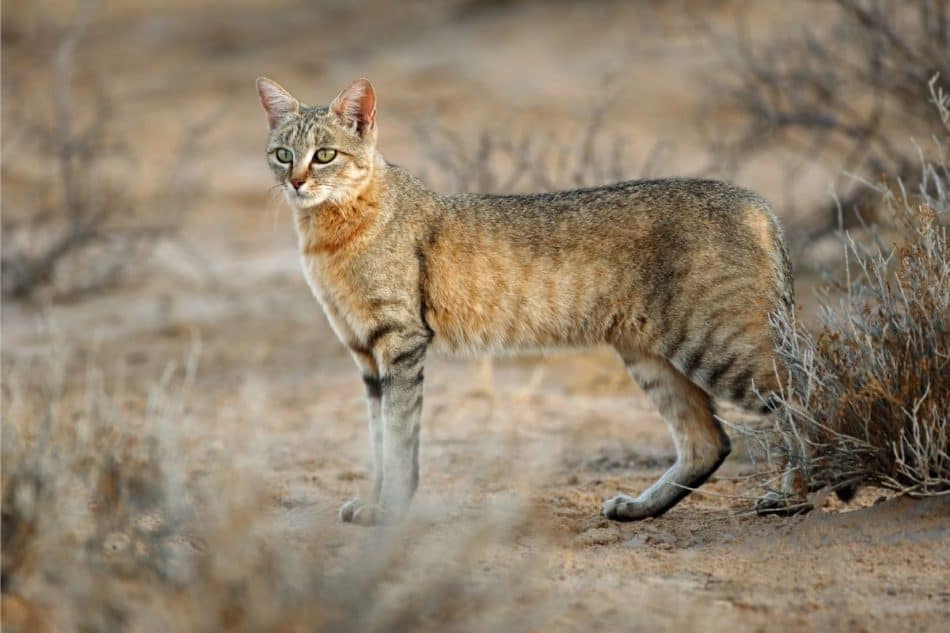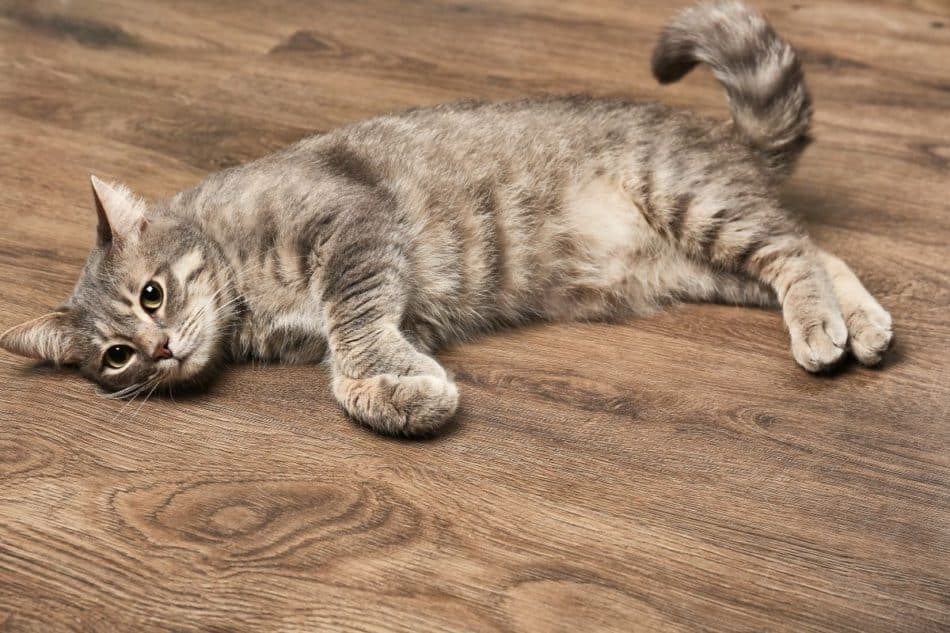Table of Contents
2 Reasons to Think Cats Like Warmth:
1. their behavior – When the temperature in the house feels to you what might be described as a little cool, you might observe your cat doing these things to be warm:
- sleeping in a ray of sunshine
- curling up in a ball to nap
- sleeping next to a heating vent
- cuddling up in a blanket
- cuddling up next to you
Your “just right” normal house temperature will probably be fine with your cat, but when they want to nap they will probably find themselves a warm spot.
2. their ancestry – Genetic analysis of modern cat DNA has led animal researchers to conclude that our domestic cats (Felis Silvestris Catus) evolved from the Near Eastern Wildcat (Felis Silvestris Lybica), which is a sub-species of the African Wildcat.
The domestication of this animal is thought to have its beginnings about 10,000 years ago in an area known as the Fertile Crescent, which encompasses the present day Near Middle East and a small part of northeastern Africa. A second phase of their domestication is believed to have begun somewhere between 4,000 and 6,000 years ago in Egypt.
These geographic areas have generally warm climates.
Sources: ScienceDirect and Library Of Congress and International Cat Care
We know our domestic cats are now found the world over, in both hot and cold climates. Selective breeding has produced various pedigrees, some with more and some with less hair than their ancestors.
Nevertheless, one might conclude that our cats inherited a preference for warmth from their predecessors who lived in those mostly hot locations.
The African Wildcat is still with us, and is so genetically close to our pet cats that there is little difference between the two. Look at this photograph:

It appears your kitty prefers a warm rather than a cool climate, but take care not to let your cat get too hot. When the temperature gets above their comfort level, they will do what they can to stay cool.
8 Things Cats Do to Keep Cool
1. self-grooming – This activity by your cat spreads saliva over your cat’s body that has a cooling effect as the moisture evaporates. The tiny spines on your cat’s tongue allows the saliva to penetrate the fur and be slathered upon the cat’s skin.
Just as an insulated water bottle keeps a drink cold, a cat’s fur acts as an insulating mechanism that helps the animal retain a cool body temperature. However, removal of excess fur through grooming may make it easier to apply saliva moisture to the skin. You can help with this by regularly brushing your cat.
Visit my blog post How to Deal With Cat Hair to learn how to brush your cat.
Sources for #1: Proceedings of the National Academy of Sciences and The Washington Post
2. lying on a cool surface – When they lie down, cats will seek out “non-fuzzy” surfaces such as kitchen tile or wood floors. They avoid carpet and blankets when they want to be cool.

3. stretching out – Cats curl up when they want to conserve body heat, but not when the air feels warm. They relax and extend themselves to keep cool.
4. enjoying the breeze – We all feel more comfortable on a warm day if there is some breeze. Your kitty will surely appreciate your turning on any ceiling fans or floor fans that you have available.
5. taking it easy – You will probably see some serious cat lounging when the temperature goes up a bit. Jus as exercise makes you feel hot and tired when the house is warm, so to will cats avoid strenuous activity in a warm environment.
6. getting some shade – You have probably witnessed your cat sleeping in a sunny spot when the air is a little chilly, but they will opt for a shady spot when they are trying to stay cool.
7. drinking water – Water consumption is important for cats all the time, but most certainly when the weather is warm. You can help by providing several water bowls around the house, and maybe get your pet a cat water fountain.
Visit my blog post How to Choose a Cat Water Fountain if you need information.
8. staying out of parked vehicles – Most cats hate having to get in a vehicle, but sometimes it is necessary. Please do not leave them in a parked vehicle.
In the first 10 minutes the temperature inside a parked vehicle can rise by 19 degrees F. And in 20 minutes it can go up by 29 degrees F.
For example, if it is 70 degrees F outside, in 10 minutes the vehicle interior can be 89 degrees F. In 20 minutes in can be 99 degrees F.
Leaving the windows partially open is of negligible benefit, so do not rely on that to keep them cool.
The exterior color of your vehicle makes no difference either, because it is the sun shining in the windows that heats up the interior.
Source for #8: National Safety Council
Do Cats Sweat?
Cats do not sweat the way humans sweat. Cats do not have sweat glands over their body the way humans do. Cats do have sweat glands on their paws that mostly react to stress rather than heat.
A study of selected mammals was conducted that found that sweat on the animal’s paws resulted in an increase in friction between the paws and the surface the animal was walking or running on. This increase in friction allowed the animal to run faster and climb better during the stress of fleeing from a predator or when chasing prey.
Since those sweat glands on their paws do not provide any meaningful degree of temperature regulation, cats seek methods other than sweating to cool themselves. The eight things described in our previous section give them an alternative to sweating.
Sources: Science Friday and American Journal of Physiology and Science Direct
If You Would Like More Information
Be sure to visit my blog post Learn About Cats for more about these animals we love.
